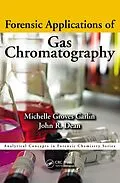Several areas of forensic science use the technique of gas chromatography, ranging from fire analysis to the investigation of fraudulent food and perfumes. Covering the essentials of this powerful analytical technique, Forensic Applications of Gas Chromatography explains the theory and shows applications of this knowledge to various realms of foren
Autorentext
John Richard Dean, Michelle Groves Carlin
Inhalt
Introduction to Gas Chromatography. Instrumentation for Gas Chromatography. Choice of Gas. Sample Introduction. Column Oven. GC Columns. Detectors. Basic Principles of Chromatography. Theory of Chromatography. Method Development. Influence of Sample Introduction Method. Influence of the Carrier Gas. Influence of the Column. Influence of Oven Temperature. Influence of the Detector. An Example. Quality Assurance and Method Validation. Quality Assurance. Quality Control. Why Be Quality Assured?. Ways to Ensure Quality of Product or Service. Instrument Qualification. Method Validation. Troubleshooting in Gas Chromatography. Introduction. Baseline Disturbances. Irregular Peak Shapes. Retention Time Shifts. Loss of Separation or Resolution. Loss of Sensitivity. Rapid Column Deterioration. Ghost Peaks. Developments in Gas Chromatography. Developments in Sample Preparation Techniques. Developments in Column Technology. Developments in Instrumentation. Forensic Applications of Gas Chromatography. Drug Analysis. Forensic Toxicology. Forensic Analysis of Fire Debris. Paint Analysis. Food and Fragrance Analysis. Answers to Questions. Glossary. Index.
